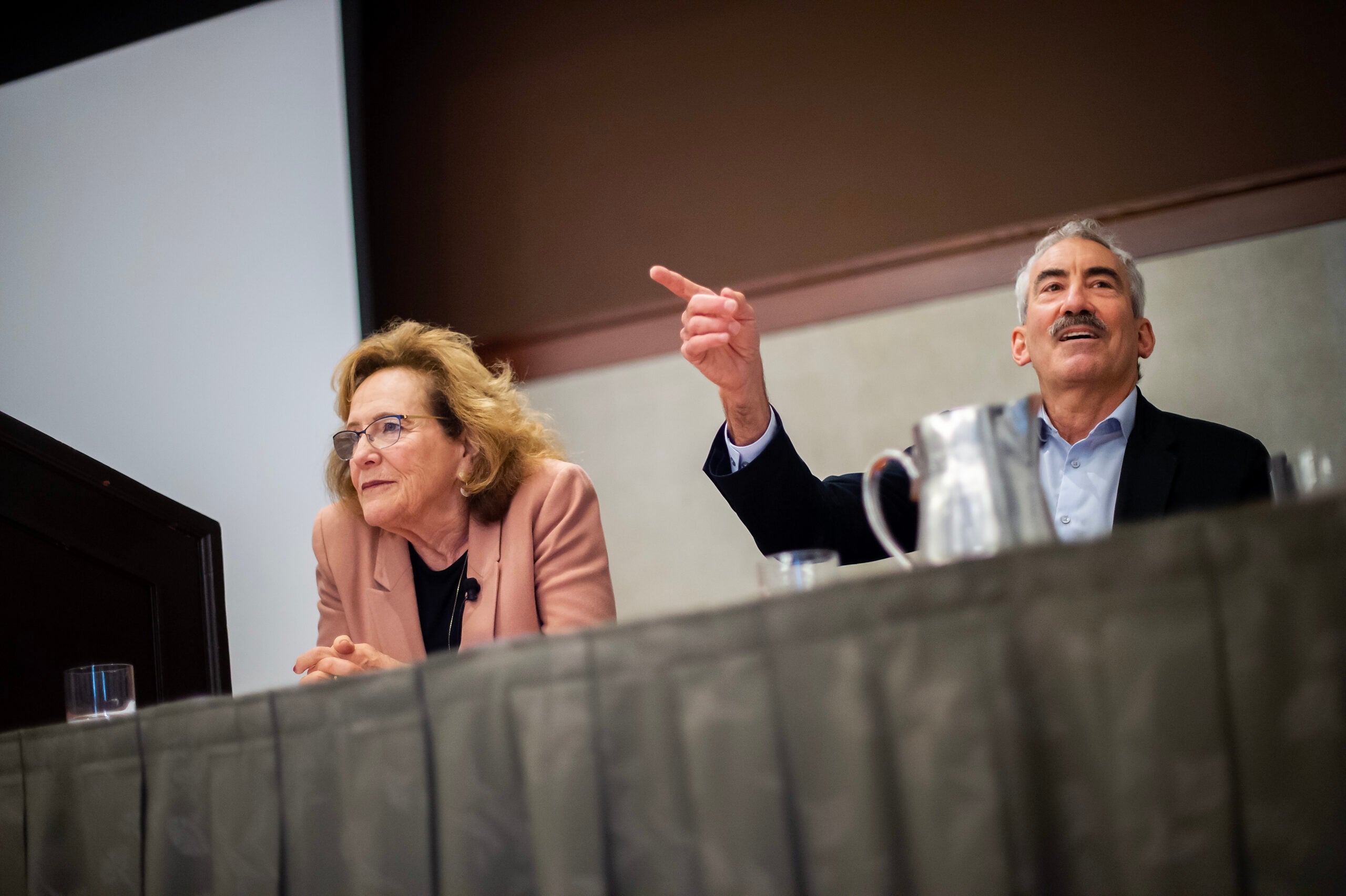I-frame, S-frame, and the Use of Behavioral Economics in Government: A Q&A with Cass Sunstein


Drs. Nick Chater and George Loewenstein created quite a stir in the behavioral economics world when they argued in a recent paper that some behavioral scientists have mistakenly focused their efforts on trying to solve society’s biggest problems by focusing on changing individual behavior instead of by addressing systemic or structural issues.
Drs. Chater and Loewenstein believe that individual-level interventions (i-frame) often have modest effects and posit that these efforts might deflect attention and support from how system-level interventions (s-frame) could tackle these issues. For example, they write:
“[W]e doubt that the problem of reducing carbon emissions can be solved or even significantly remediated by i-level interventions such as providing small incentives, more information, more transparent information, more feedback, more awareness of social norms, or just greener ‘defaults.’ The policy interventions required to have a real impact on climate change will require system changes on a huge scale: changing how we heat our homes, produce and consume food, how we travel and ship goods, rethinking almost every aspect of manufacturing, along with vastly expanding the production and distribution of green electricity and (probably) hydrogen.”
They argue that behavioral scientists should use their skills to develop and implement “value-creating system-level change.” (Read more in their paper published in Behavioral and Brain Sciences, “The i-frame and the s-frame: How focusing on individual-level solutions has led behavioral public policy astray.”)
The paper was celebrated by some and criticized by others, including Dr. Cass Sunstein whose work was referenced in the paper. Recently, Dr. Sunstein wrote a response paper, a preprint set to appear in Behavioral and Brain Sciences titled “Conspiracy theory: On certain misconceptions about the uses of behavioral science in government.”
“In some circles, there is a misconception that within government, the only or principal uses of behavioral science consist of efforts to nudge individual behavior (sometimes described, pejoratively and unfairly, as “tweaks”). Nothing could be further from the truth,” Dr. Sunstein writes. “Behavioral science has been used, and is being used, to help inform large-scale reforms, including mandates and bans directed at companies (as, for example, in the cases of fuel-economy mandates and energy efficiency mandates). Behavioral science has been used, and is being used, to help inform taxes and subsidies (as, for example, in the cases of cigarette taxes, taxes on sugar-sweetened beverages, and subsides for electric cars). Behavioral science has been used, and is being used, to help inform nudges imposed on companies (with such goals as reducing greenhouse gas emissions, improving occupational safety, and protecting personal privacy).”

Dr. Sunstein maintains that i-frame interventions can have significant positive effects, and he believes there is no evidence that the use of individual-level interventions makes s-frame efforts less likely. He disagrees with Drs. Chater and Loewenstein that i-frame initiatives crowd out s-frame approaches and argues that: “it would be false to suggest that in the real world of policymaking, official uses of behavioral science have been focused on, and dominated by, attempts to alter individual behavior. It would be far more accurate to say exactly the opposite — that many of the major efforts have involved efforts to target systems and institutions, sometimes through mandates and bans, sometimes through subsidies and taxes, and sometimes through nudges.”
The Center for Health Incentives and Behavioral Economics (CHIBE) spoke with Dr. Sunstein about these issues.
What was your first reaction to reading Drs. Loewenstein and Chater’s paper on i-frame and s-frame? What prompted you to write this response?
I admire the authors very much, so I was startled because the paper did not seem at all aware of what governments are actually doing or of how governments work. Initially I did not want to write a response, indeed I was clear that I ought not to do so, because the very idea pained me (Loewenstein, in particular, is a terrific friend as well as a hero of mine). But I thought it would be useful to correct the record.
You note that Drs. Loewenstein and Chater believe that s-frame solutions are available for major problems. If we have good individual and system-level solutions, why do you think we can’t make more headway in solving issues like obesity or climate change in the US?
On climate change, the United States has done so much! There are energy efficiency rules, and fuel economy rules, and there is the HFC phasedown, and there is much more – not to mention the new legislation. On obesity, a great deal has also been done; consider the Let’s Move campaign. Still, it is obviously costly to reduce greenhouse gas emissions, and costs matter, especially in a challenging economic time. Higher energy costs are not exactly welcome. It is also costly to shift people’s eating habits, and those costs matter too. People like high-calorie foods.
The full story about why we haven’t done more to date, in both contexts, is very complicated, and would require a book. (I would like to read it!)
Do you have a favorite example of how behavioral economics has helped lead to large-scale reform?
I have many favorites, including in the domain of health care, but I would single out fuel-economy rules, which have been justified by reference to present bias, limited attention, and myopic loss aversion. Aggressive fuel-economy rules cannot easily be justified, on social welfare grounds, without reference to consumer savings, and it’s hard to speak of consumer savings without pointing to behavioral findings. Consumers can buy electric cars if they want, so if they aren’t, you need an explanation of why they are making mistakes. Behavioral economists have given such an explanation, and it has greatly influenced governments.
What area or topic do you wish we had more behavioral economists thinking about solutions for, either from the individual- or system-perspective?
Behavioral economists are working on almost every area or topic! But I would like to see more attention paid to road safety. Maybe 1.3 million people will be killed in 2023 on the roads – how about saving 200,000 lives?
Is there an issue that you think behavioral economists have spent a lot of time creating solutions for that you wish the government paid more attention to and implemented?
There is a lot of terrific work on administrative burdens or “sludge,” which creates a wall between people and opportunities, education, medical help, training, legal assistance, and employment. Think about licenses or permits, or access to things that can turn people’s life around. We need “sludge audits” all around the world, and we need a sustained effort to reduce sludge. That is happening, thank goodness — but we need more, and we need it faster.